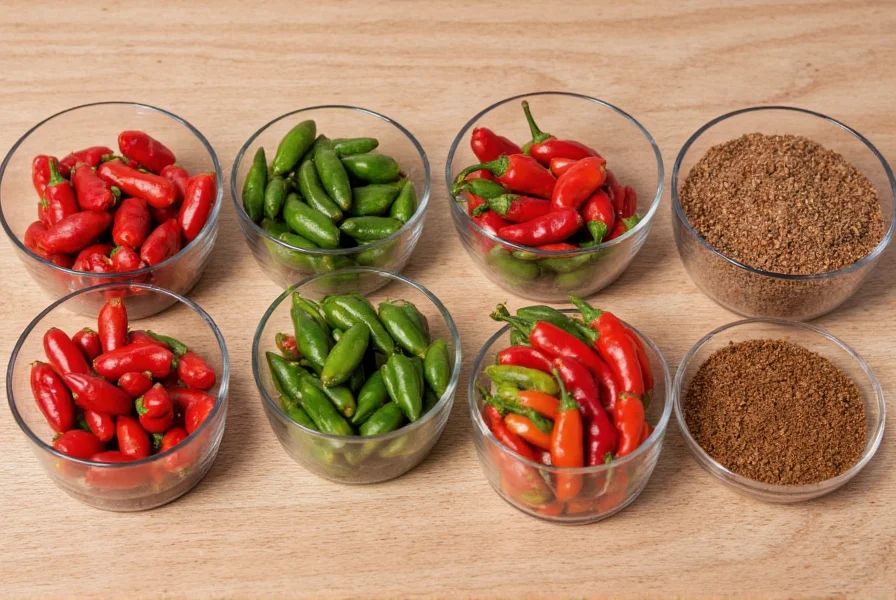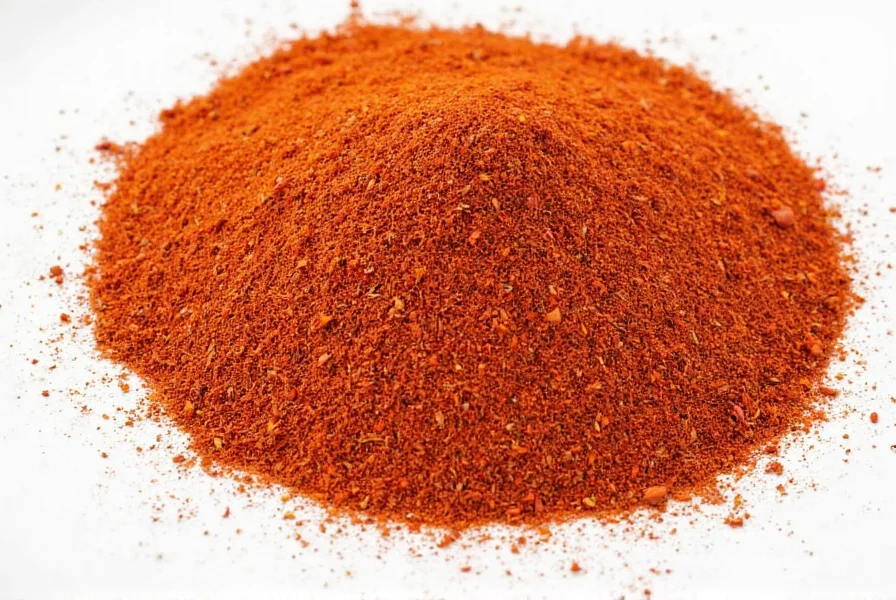When you're in the middle of cooking and realize you've run out of crushed red pepper flakes, don't panic. Many common pantry items can effectively replace this popular spice while maintaining the heat and flavor your dish needs. Understanding the nuances between substitutes ensures your recipe turns out perfectly, whether you're making pizza, pasta, or roasted vegetables.
Understanding Crushed Red Pepper Flakes
Crushed red pepper flakes consist of dried and crushed chili peppers, typically cayenne or similar varieties. They provide moderate heat (30,000-50,000 Scoville units) with a slightly fruity, earthy flavor. Unlike pure cayenne powder, red pepper flakes contain seeds and membrane fragments that contribute to their complex heat profile. They're essential in Italian, Mediterranean, and many American dishes where controlled spiciness matters.

Top Substitutes and Their Characteristics
Not all substitutes work equally well in every situation. The right alternative depends on your recipe's specific requirements, desired heat level, and available ingredients. Consider these factors when choosing a replacement:
| Substitute | Heat Level | Flavor Profile | Conversion Ratio | Best For |
|---|---|---|---|---|
| Cayenne pepper | High (30,000-50,000 SHU) | Sharp, direct heat | 1:2 (1/2 tsp cayenne = 1 tsp flakes) | Sauces, marinades, dry rubs |
| Hot paprika | Moderate (5,000-15,000 SHU) | Smoky, slightly sweet | 1:1 (equal amount) | Pizza, roasted vegetables, soups |
| Fresh jalapeño | Moderate (2,500-8,000 SHU) | Grassy, fresh heat | 1 small pepper = 1 tsp flakes | Salsas, stir-fries, fresh dishes |
| Chipotle powder | Moderate-High (2,500-8,000 SHU) | Smoky, earthy | 1:1.5 (2/3 tsp powder = 1 tsp flakes) | BBQ, chili, Mexican dishes |
| Hot sauce (Tabasco) | Variable | Vinegary, tangy | 3-5 drops = 1/8 tsp flakes | Finishing touches, dressings |
How to Choose the Right Substitute
Selecting the perfect alternative requires understanding your recipe's needs. For Italian dishes like arrabbiata sauce or pizza, hot paprika provides similar color without overwhelming heat. When making Cajun or Creole recipes, cayenne pepper better matches the intended flavor profile. Fresh chili peppers work best in dishes where you want visible specks of red pepper, while powders blend seamlessly into sauces and dressings.
Consider the dish's cooking time when substituting. Add fresh peppers early in long-cooking dishes to mellow their heat, but incorporate hot sauces at the end to preserve their bright flavor. For baking applications like spiced breads, use ground alternatives since fresh ingredients would create texture issues.

Practical Substitution Tips
When replacing crushed red pepper flakes, start with less than you think you need. You can always add more heat, but you can't remove it once incorporated. For precise control, mix your substitute with a small amount of oil before adding to your dish—this helps distribute the heat evenly.
Remember that substitutes affect more than just heat. Paprika adds color without significant spice, while cayenne delivers pure heat without the textural element of flakes. If your recipe specifically mentions "crushed" pepper, consider finely chopping fresh chilies to mimic the texture.
For those seeking a milder alternative for crushed red pepper flakes in family meals, sweet paprika combined with a pinch of cayenne provides color and adjustable heat. When cooking for sensitive palates, remove seeds and membranes from fresh peppers to reduce capsaicin concentration.
Avoiding Common Substitution Mistakes
Many home cooks make critical errors when substituting red pepper flakes. Don't use equal amounts of cayenne for red pepper flakes—this often creates overpowering heat. Avoid using bell peppers as substitutes since they lack capsaicin entirely. Never substitute whole dried chilies without proper preparation, as they won't distribute heat evenly.
When substituting in fermented foods like hot sauce or pickles, remember that fresh peppers introduce moisture that affects preservation. For baking applications, avoid liquid substitutes like hot sauce unless you adjust other liquid ingredients proportionally.











 浙公网安备
33010002000092号
浙公网安备
33010002000092号 浙B2-20120091-4
浙B2-20120091-4